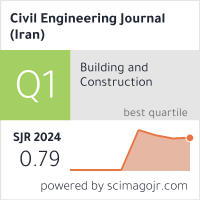eXplainable Machine Learning for Real Estate: XGBoost and Shapley Values in Price Prediction
Downloads
Doi:10.28991/CEJ-2025-011-05-022
Full Text:PDF
Downloads
[2] Shapley, L. S. (2020). A Value for 𔑛-PERSON Games. Classics in Game Theory, 69–79, Princeton University Press, Princeton, United States. doi:10.2307/j.ctv173f1fh.12.
[3] Lundberg, S. M., Nair, B., Vavilala, M. S., Horibe, M., Eisses, M. J., Adams, T., Liston, D. E., Low, D. K. W., Newman, S. F., Kim, J., & Lee, S. I. (2018). Explainable machine-learning predictions for the prevention of hypoxaemia during surgery. Nature Biomedical Engineering, 2(10), 749–760. doi:10.1038/s41551-018-0304-0.
[4] Kumkar, P., Madan, I., Kale, A., Khanvilkar, O., & Khan, A. (2018). Comparison of Ensemble Methods for Real Estate Appraisal. 2018 3rd International Conference on Inventive Computation Technologies (ICICT), 297–300. doi:10.1109/icict43934.2018.9034449.
[5] Stang, M., Krämer, B., Nagl, C., & Schäfers, W. (2023). From human business to machine learning-methods for automating real estate appraisals and their practical implications. Journal of Real Estate Economics, 9(2), 81–108. doi:10.1365/s41056-022-00063-1.
[6] Calainho, F. D., van de Minne, A. M., & Francke, M. K. (2024). A Machine Learning Approach to Price Indices: Applications in Commercial Real Estate. Journal of Real Estate Finance and Economics, 68(4), 624–653. doi:10.1007/s11146-022-09893-1.
[7] Lenaers, I., & De Moor, L. (2023). Exploring XAI techniques for enhancing model transparency and interpretability in real estate rent prediction: A comparative study. Finance Research Letters, 58, 104306. doi:10.1016/j.frl.2023.104306.
[8] Trindade Neves, F., Aparicio, M., & de Castro Neto, M. (2024). The Impacts of Open Data and eXplainable AI on Real Estate Price Predictions in Smart Cities. Applied Sciences (Switzerland), 14(5), 2209. doi:10.3390/app14052209.
[9] Jin, S., Zheng, H., Marantz, N., & Roy, A. (2024). Understanding the effects of socioeconomic factors on housing price appreciation using explainable AI. Applied Geography, 169, 103339. doi:10.1016/j.apgeog.2024.103339.
[10] Kok, N., Koponen, E. L., & Martínez-Barbosa, C. A. (2017). Big data in real estate? From manual appraisal to automated valuation. Journal of Portfolio Management, 43(6), 202–211. doi:10.3905/jpm.2017.43.6.202.
[11] Yang, B., & Cao, B. (2018). Research on Ensemble Learning-based Housing Price Prediction Model. Big Geospatial Data and Data Science, 1(1), 1–8. doi:10.23977/bgdds.2018.11001.
[12] Hendrayati, H., Achyarsyah, M., Marimon, F., Hartono, U., & Putit, L. (2024). The Impact of Artificial Intelligence on Digital Marketing: Leveraging Potential in a Competitive Business Landscape. Emerging Science Journal, 8(6), 2343–2359. doi:10.28991/ESJ-2024-08-06-012.
[13] Burnwal, Y., & Jaiswal, D. R. C. (2023). A Comprehensive Survey on Prediction Models and the Impact of XGBoost. International Journal for Research in Applied Science and Engineering Technology, 11(12), 1552–1556. doi:10.22214/ijraset.2023.57625.
[14] Breiman, L. (1996). Bagging predictors. Machine Learning, 24(2), 123–140. doi:10.1007/bf00058655.
[15] Breiman, L. (2001). Random forests. Machine Learning, 45(1), 5–32. doi:10.1023/A:1010933404324.
[16] Banerjee, D., & Dutta, S. (2018). Predicting the housing price direction using machine learning techniques. IEEE International Conference on Power, Control, Signals and Instrumentation Engineering, ICPCSI 2017, 2998–3000. doi:10.1109/ICPCSI.2017.8392275.
[17] Choy, L. H. T., & Ho, W. K. O. (2023). The Use of Machine Learning in Real Estate Research. Land, 12(4), 740. doi:10.3390/land12040740.
[18] Friedman, J. H. (2001). Greedy function approximation: A gradient boosting machine. Annals of Statistics, 29(5), 1189–1232. doi:10.1214/aos/1013203451.
[19] Ho, W. K. O., Tang, B. S., & Wong, S. W. (2021). Predicting property prices with machine learning algorithms. Journal of Property Research, 38(1), 48–70. doi:10.1080/09599916.2020.1832558.
[20] DataScientest (2024). XGBoost: The Champion of Competitive Machine Learning. DataScientest, Paris, France. Available online: https://datascientest.com/en/xgboost-the-champion-of-competitive-machine-learning (accessed on April 2025).
[21] Mahesh, T. R., Vinoth Kumar, V., Muthukumaran, V., Shashikala, H. K., Swapna, B., & Guluwadi, S. (2022). Performance Analysis of XGBoost Ensemble Methods for Survivability with the Classification of Breast Cancer. Journal of Sensors, 2022. doi:10.1155/2022/4649510.
[22] Zhang, P., Jia, Y., & Shang, Y. (2022). Research and application of XGBoost in imbalanced data. International Journal of Distributed Sensor Networks, 18(6), 1–10. doi:10.1177/15501329221106935.
[23] Akiba, T., Sano, S., Yanase, T., Ohta, T., & Koyama, M. (2019). Optuna. Proceedings of the 25th ACM SIGKDD International Conference on Knowledge Discovery & Data Mining, 2623–2631. doi:10.1145/3292500.3330701.
[24] Kee, T., & Ho, W. K. O. (2024). Optimizing Machine Learning Models for Urban Sciences: A Comparative Analysis of Hyperparameter Tuning Methods. Preprints, 1–17. doi:10.20944/preprints202406.0264.v2.
[25] Kee, T., & Ho, W. (2024). Predicting Industrial Property Prices with Explainable Artificial Intelligence. Preprints, 1–22. doi:10.20944/preprints202409.0875.v1.
[26] SHAP (2018). Welcome to the SHAP documentation. SHAP, Osaka, Japan. Available online: https://shap.readthedocs.io/en/latest/ (accessed on April 2025).
[27] Lundberg, S. M., & Lee, S. I. (2017). A unified approach to interpreting model predictions. Advances in Neural Information Processing Systems 30: Annual Conference on Neural Information Processing Systems 2017, 4–9 December, 2017, Long Beach, United States.
[28] Lundberg, S. M., Erion, G., Chen, H., DeGrave, A., Prutkin, J. M., Nair, B., Katz, R., Himmelfarb, J., Bansal, N., & Lee, S. I. (2020). From local explanations to global understanding with explainable AI for trees. Nature Machine Intelligence, 2(1), 56–67. doi:10.1038/s42256-019-0138-9.
[29] RVD (2024). Hong Kong Property Review. Hong Kong Special Administrative Region Government, Central Government Complex, Hong Kong. Available online: https://www.rvd.gov.hk/en/publications/hkpr_previous.html (accessed on April 2025).
[30] Khan, A., Debnath, P., Sayeed, A. A., Sumon, F. I., Rahman, A., Khan, T., & Pant, L. (2024). Explainable AI and Machine Learning Model for California House Price Predictions: Intelligent Model for Homebuyers and Policymakers. Journal of Business and Management Studies, 6(5), 73–84. doi:10.32996/jbms.2024.6.5.9.
- Authors retain all copyrights. It is noticeable that authors will not be forced to sign any copyright transfer agreements.
- This work (including HTML and PDF Files) is licensed under a Creative Commons Attribution 4.0 International License.![]()















